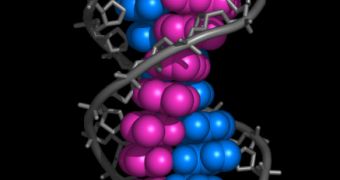The human DNA, containing the basic information about who we are and what defines us as a species, as well as some genetic information passed on by individuals before us, was long believed to be completely photo resistant. In other words, in a twisted way, it blocked the light directed towards it with its own mass. This may be hard to understand at first, but no worries, it took geneticists several years to find out why.
Apparently, the double-helix structure of DNA is responsible for the shade the acid generates on itself. Being composed of paired molecules held together by hydrogen bounds, DNA is able to quickly absorb and eliminate all UV radiation it comes in contact with. But this doesn't happen over time, it happens in femtoseconds. One of these femtoseconds last for about one millionth of a billionth of a regular old second. By using a sophisticated femtosecond pulsed laser spectroscope, scientists at the Institute of Physical Chemistry of Kiel University were able to determine exactly how long each portion of DNA strands holds light and why.
According to professor Friedrich Temps, leader of the research, the answer lies with the very structure of the double-helix portions themselves, meaning that, out of the four proteins human DNA is basically made of, some pairs have a higher tolerance to light than others. Nina Schwalb, co-author of the current research, uncovered that specific strand sections stored light for about 100 femtoseconds, while others held UV radiation for more than a thousand times longer. “This could lead to the development of a new diagnostic method whereby laser light could be used to directly recognise certain genetic sequences without, for example, having to mark the DNA with dyes as in the method used at present", she said.
The implications of this discovery are far-reaching, according to scientists at Kiel University. They say that by using lab-generated DNA strands and high-frequency laser beams, they could someday be able to “switch” DNA strands section between each other, in the hope of maybe curing some genetic diseases. Nano-technology is also considered as a means of identifying and “tagging” specific protein binds in the double-helix structure to be replaced by artificial DNA. However, all these prospects are for the distant future, when the scientists currently involved in the project reach a better understanding of what actually happens inside the human genome.

 14 DAY TRIAL //
14 DAY TRIAL //